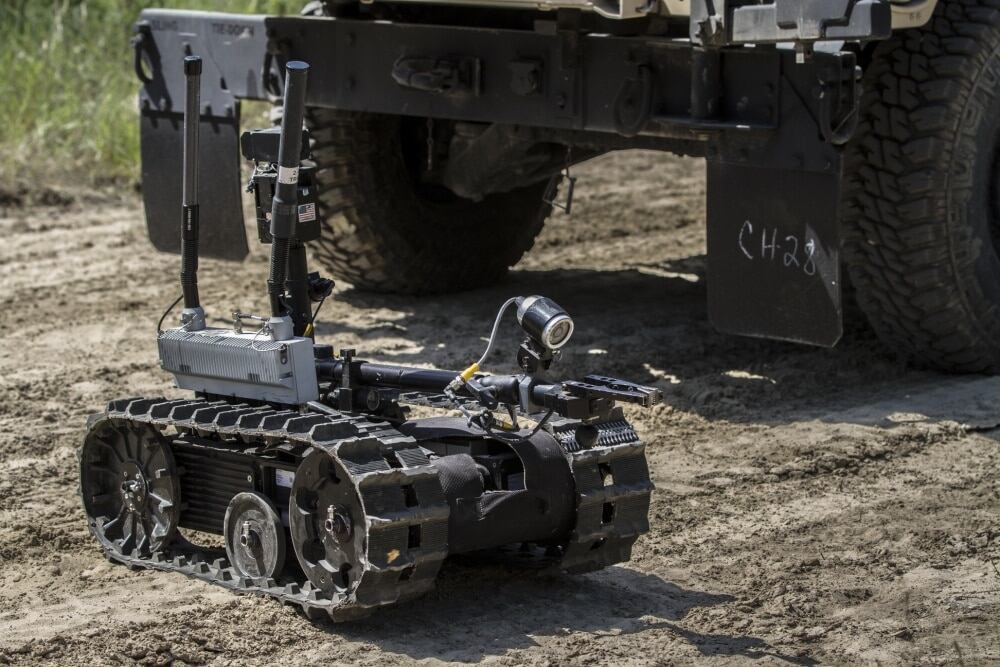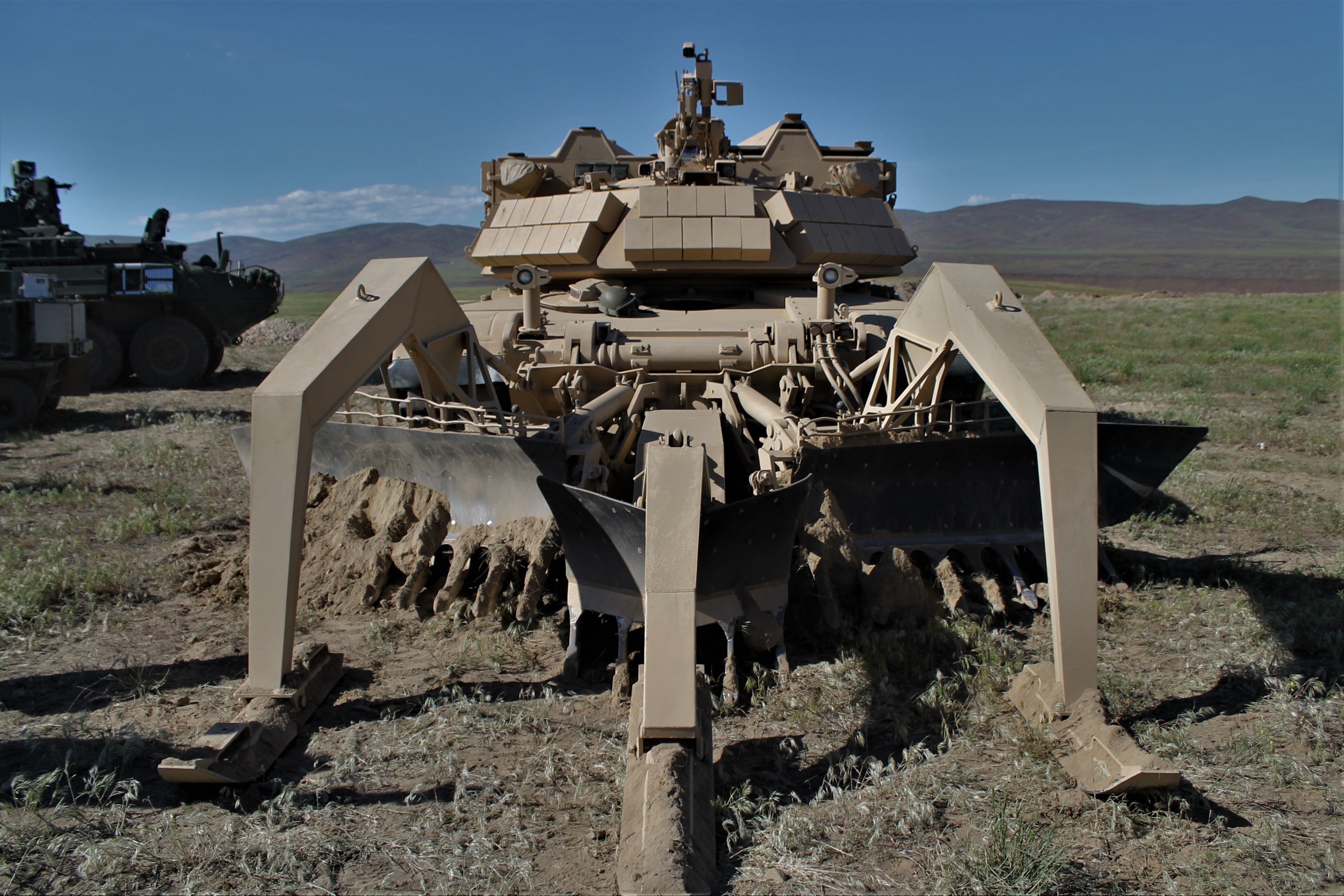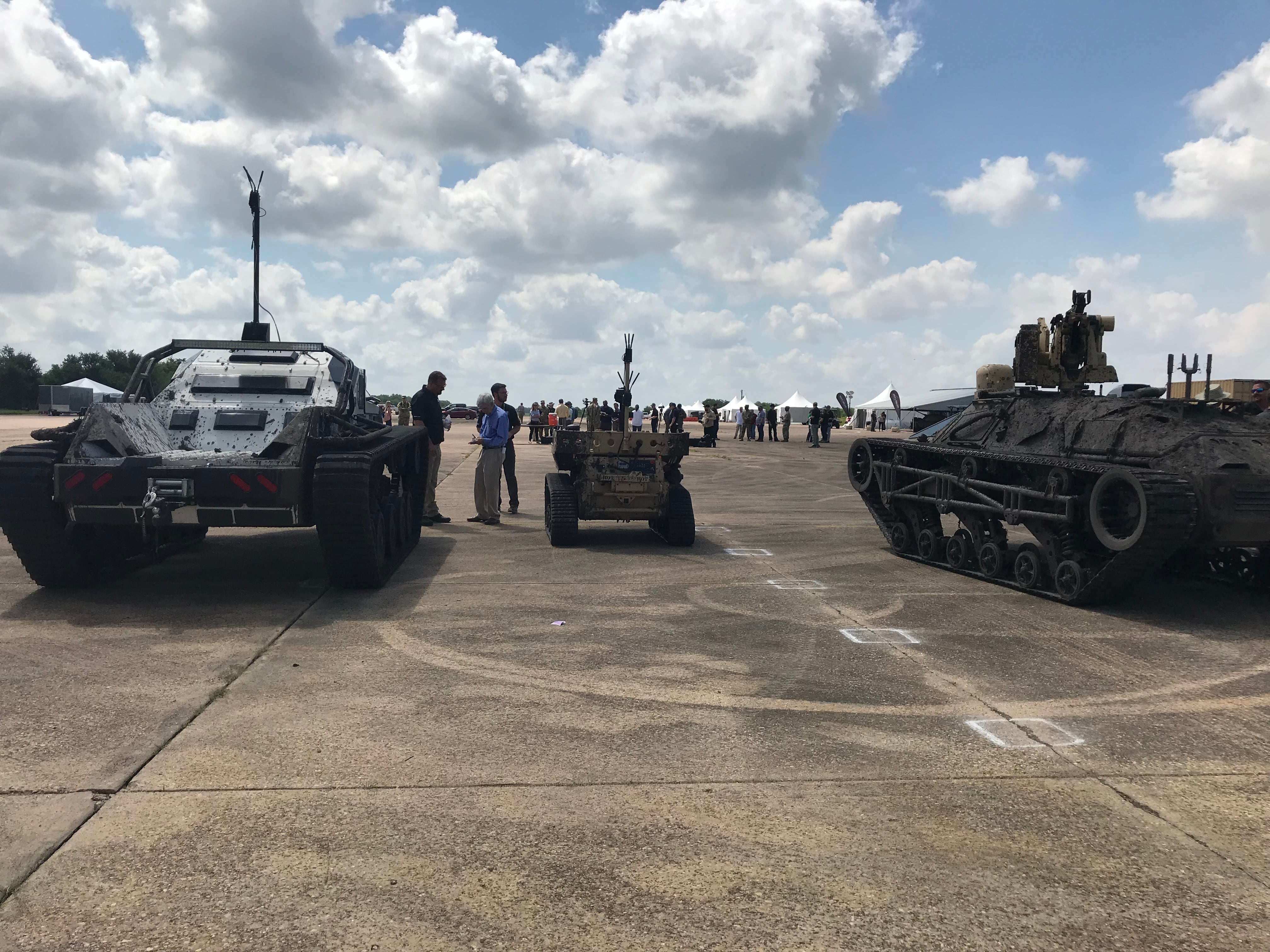WASHINGTON — The U.S. Army has chosen FLIR’s Kobra robot to serve as its heavy version of the Common Robotic System that will be used for explosive ordnance disposal and other heavy-duty jobs.
The production contract will run for a period of five years and could be worth up to $109 million.
The Army wanted its Common Robotic System-Heavy, or CRS-H, to weigh up to 700 pounds and to carry a variety of sensors and payloads to support missions.
RELATED

“The Kobra [unmanned ground vehicle] delivers unmatched strength, power and payload support in an easy-to-operate robot package,” according to a FLIR statement sent to Defense News.
Kobra has a lift capacity of 330 pounds and can stretch up to eleven-and-a-half feet to get at difficult-to-reach places, but it is also still nimble enough to climb jersey barriers and fit into the back of a standard utility vehicle, according to FLIR.
FLIR’s legacy business, Endeavor Robotics, won a contract in 2017 to provide the Army with a medium-sized UGV — the Man Transportable Robotic System Increment II. FLIR is delivering the Centaur UGV for the program.
FLIR bought Endeavor Robotics in February, an acquisition that made sense because FLIR’s camera and sensors — its bread and butter — have been used on countless manned and unmanned vehicles like those developed by the Massachusetts-based robotics company. FLIR also acquired Prox Dynamics in 2016, the Norwegian maker of the tiny micro-drone — the Black Hornet — that is now used as the Army’s soldier borne sensor.
Endeavor also competed for the CRS-Individual system — a man-packable robot that is less than 25 pounds — but lost to fellow Massachusetts-based robotics company QinetiQ North America in March.
For the CRS-H program, FLIR beat out QinetiQ.
Kobra is also participating in a Defense Advanced Research Projects Agency effort to build a system-of-systems solution that can operate in subterranean environments.
The company’s solution consists of the Kobra robot that will enter subterranean environments carrying radio repeaters —based on the company’s small, throwable FirstLook robots — and drop them off along the way to continue connectivity as it travels deeper underground. The system will also carry a four-legged robot supplied from Ghost Robotics to explore more rugged and difficult terrain as well as a quadcopter that will investigate vertical shafts and other hard to reach places. The winner of the challenge is expected to receive $2 million in 2021.
RELATED

The CRS-I and CRS-H programs are part of a larger Army program to streamline its robotics inventory.
By necessity, during the wars in Iraq and Afghanistan, the Army clamored to buy UGVs that could help provide a level of standoff between soldiers and the dangers faced on the battlefield, mostly improvised explosive devices.
The Army procured roughly 7,000 UGVs and ended up with a petting zoo of robots from Talons to PacBots to Dragon Runners, to name a few. The service had roughly nine variants of robots used for explosive ordnance disposal, two robots for engineering battalions to conduct route clearance, two for Chemical, Biological, Radiological and Nuclear (CBRN) tasks and three for contingency and global response forces.
The Army’s way forward uses just a few common platforms where systems and sensors can be swapped out easily for different missions and which are all controlled using one universal controller.
It’s been the season for major headway in Army robotics programs across the board.
The service is also underway with development of robotic combat vehicles in light, medium and heavy categories.
RELATED

The Army invited four teams to compete to build prototypes for its future light RCV last month: A Textron, Howe & Howe and FLIR team, a team of QinetiQ and Pratt & Miller, HDT Global and Oshkosh Defense.
And three teams were picked earlier this month to move on in the Army’s competition for a medium-sized RCV: General Dynamics Land Systems, QinetiQ and the Textron, FLIR and Howe & Howe team.
The Army also awarded, at the end of last month, a contract to GDLS to provide the Squad Multipurpose Equipment Transport (SMET) unmanned vehicle. GDLS offered up its Multi-Utility Tactical Transport — or MUTT — in that competition.
Jen Judson is an award-winning journalist covering land warfare for Defense News. She has also worked for Politico and Inside Defense. She holds a Master of Science degree in journalism from Boston University and a Bachelor of Arts degree from Kenyon College.







